I shot this short video a few weeks ago in Montreal. It’s a detail from Peter Flemming’s Instrumentation installation, which was part of the International Digital Arts Biennial. I usually find the auto-focus “feature” of my Nokia Lumia 800 is more annoying than helpful, but in this instance the auto-focus, for some reason, pulsed in sync with the art itself, which was kind of cool.
Video from the musical swings in Montreal. Music was broken the day we visited, so we had to be content simply with the swings. But it was still pretty neat. I can’t watch this without getting dizzy.
The tympan — the top layer of oiled paper on top of which paper to be printed is laid on the letterpress — is a sort of archaeological record of the printing process. Here’s the tympan for the Richmond Street poster:
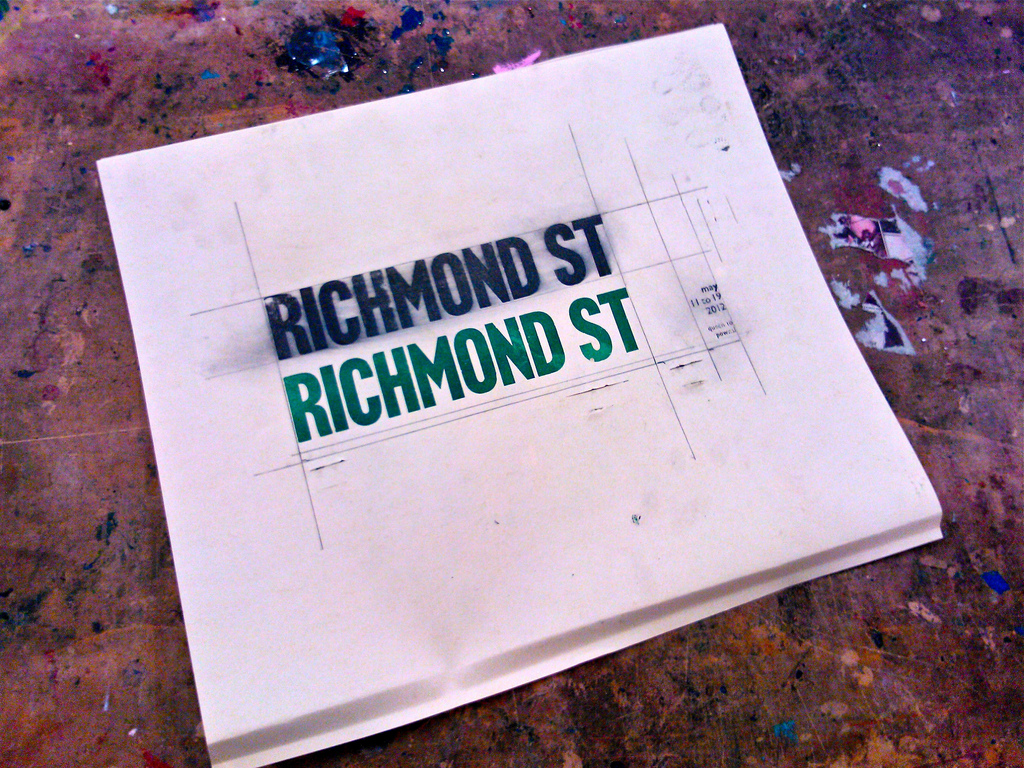
The Creative Studio app from Nokia for Windows Phone has an elegant panorama-taking function that I’ve been experimenting with. One of the problems with panoramas on the web is that they’re hard to display with any justice because they’re much wider than they are high. So why not, I figure, turn the camera 90 degees and shoot a vertical pano! Here’s the result:

Can something be considered “sustainable” if only weirdos are involved? As a weirdo myself, this is a topic I spend a lot of time thinking about, and the Richmond Street Transformation project that my office overlooks has caused me to consider the issue again.
So far the project appears to be very much of the “Birkenstocks and apple cider” school — chalk painting, conceptual art, Katimavik demonstrations, talking circles, etc. — to the point, I think, the end effect might actually end up being anti-sustainable: for regular everyday people walking and driving by the message isn’t going to be “wow, we really should have more bicycle lanes in Charlottetown!” it’s going to be more “they closed the street for this!?”.

The transformation project has another week of action to convince me otherwise, but so far it hasn’t lived up to its promise.
Despite my difficulties learning how to spell it, I’m experimenting with using the third-party commenting platform Disqus to manage comments here.
Although commenting might appear to be a technically simple aspect of maintaining a blog — name, email, text, blamo — it’s the defense against the ever-widening torrent of blog spam that’s the complicated part. I’ve experimented with everything here — reCAPTCHA, Mollom, Akismet, Defensio — and although they do variously capable jobs at filtering out the spam, they also make the user experience of commenting suffer because of the delays involved in the spam-catching-and-filtering.
So I’m going to experiment with letting someone else have a go for a while.
Please let me know (in the comments, of course) whether this works better for you in the readership; if it looks like Disqus is a good replacement for Drupal’s built-in commenting, I’ll work at migrating the 20,000+ comments that have flowed in over the years into the Disqus archive.
I’ve had a MyFax.com account for as long as I can remember: I hardly every need to send faxes, but once or twice a year the need has arisen. But not for a long while now, and hardly at a volume that would warrant the monthly cost. So I’ve closed my account, and you can no longer send me faxes nor expect to receive them from me. The end of an era that started many years ago with WinFax Pro (note how the email address on that old Usenet post is caprukav@atlas.cs.upei.ca).
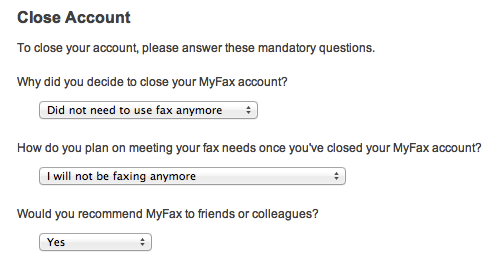
Oliver and I spent the afternoon inside the projection room at Brackley Drive-in yesterday with Bob Boyle and his son Ben helping them prepare files for their new digital projection system.
Bob has made a huge investment in projection technology this year, shifting entirely from film to digital, and one of the content gaps that needed filling in were the various interstitial bits of film like “The Show Starts in 10 Minutes.” Bob put together animations, using Animoto for all of these; I simply helped him get them from the M4V format that Animoto allows you to save animation in through to the DCP format required by his digital projection system (I have some notes here if you’re doing this yourself). We finally got it all mostly working after about 3 hours of experimenting, most of which was spent waiting for video files to convert from one format to another. If you’re at the drive-in this season, watch for the result.
Here’s what the new projection system looks like (on the left) beside the old system (on the right; as a backup for now):
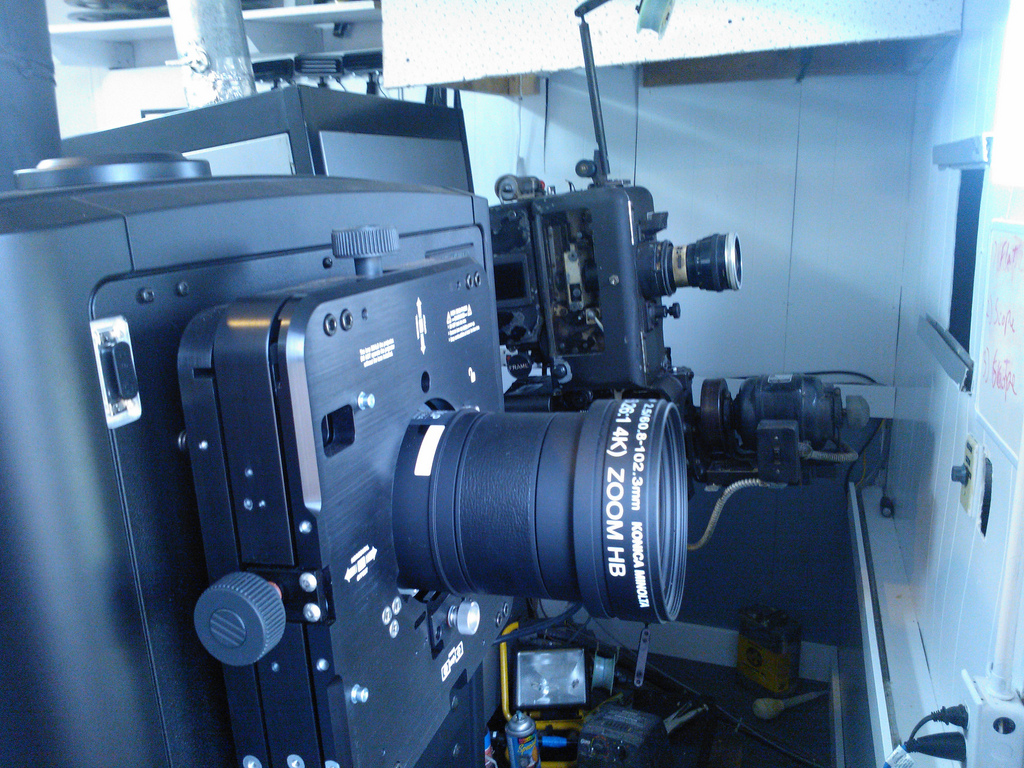
From the other side it looks more like a data centre rack:
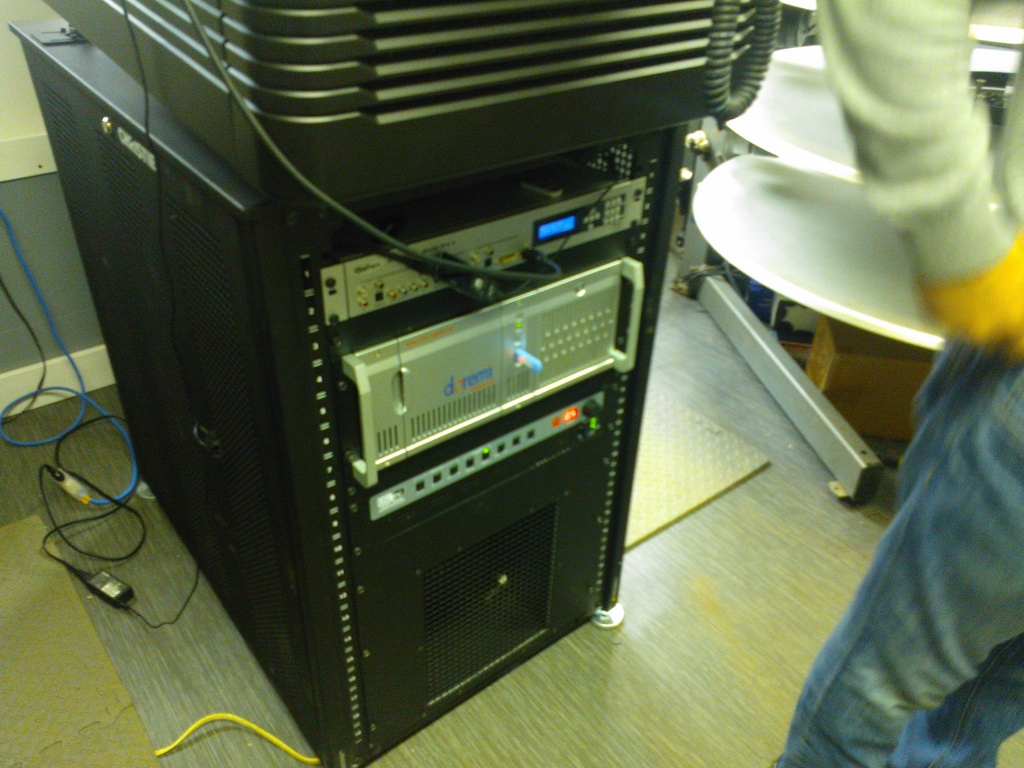
The top unit in that rack is the driver for the new closed captioning system that Bob will roll out shortly, an innovation that would have been impossible in a pre-digital era. Those requiring captions are loaned an in-car caption display that looks like this:
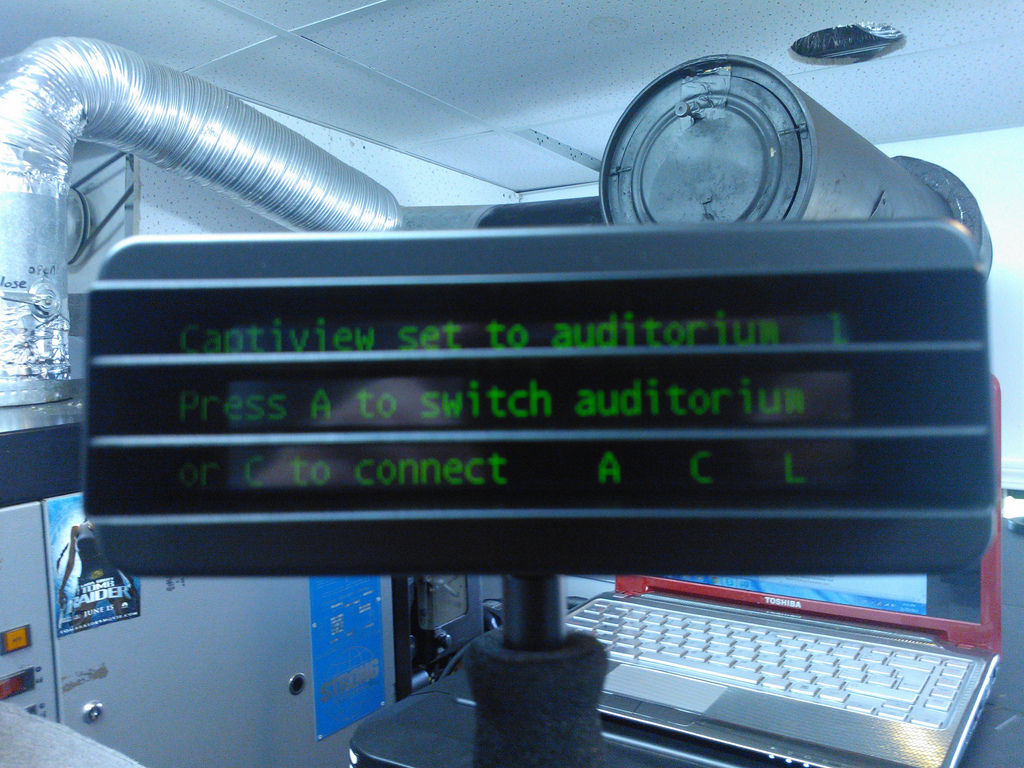
The captions are displayed on that unit exactly as they would be if you turned on closed captioning on your television.
The captioning system isn’t the only drive toward accessibility that Bob’s taken this year: he’s finishing off construction of accessible washrooms along with a paved area of the lot close to the canteen that will allow easier navigation for wheelchairs.
The Brackley Drive-in is open weekends now; 7 days a week come summer. Check out what’s coming soon.
The Richmond Street transformation crew has been hard at work all day, and the street is beginning to take on a different character. While my jury is still out on the shape of the bicycle lane — I’m not sure a wavy-gravy bicycle lane is “sustainable” — it’s nice to see a gaggle of passionate people outside the office window painting and sweeping and drawing and plotting. Stay tuned for more.
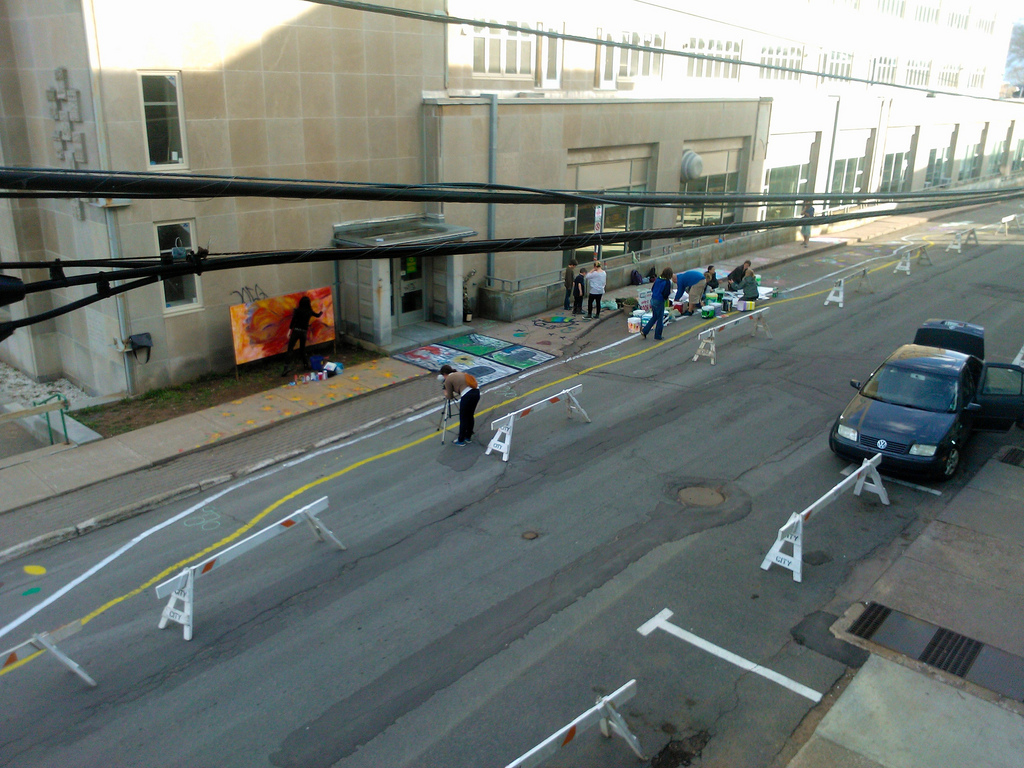
I leaned out of the window of the Reinventorium and snapped this photo of a “living wall” set up beside The Guild on Richmond Street, not anticipating the nice reflection the building would offer in return:
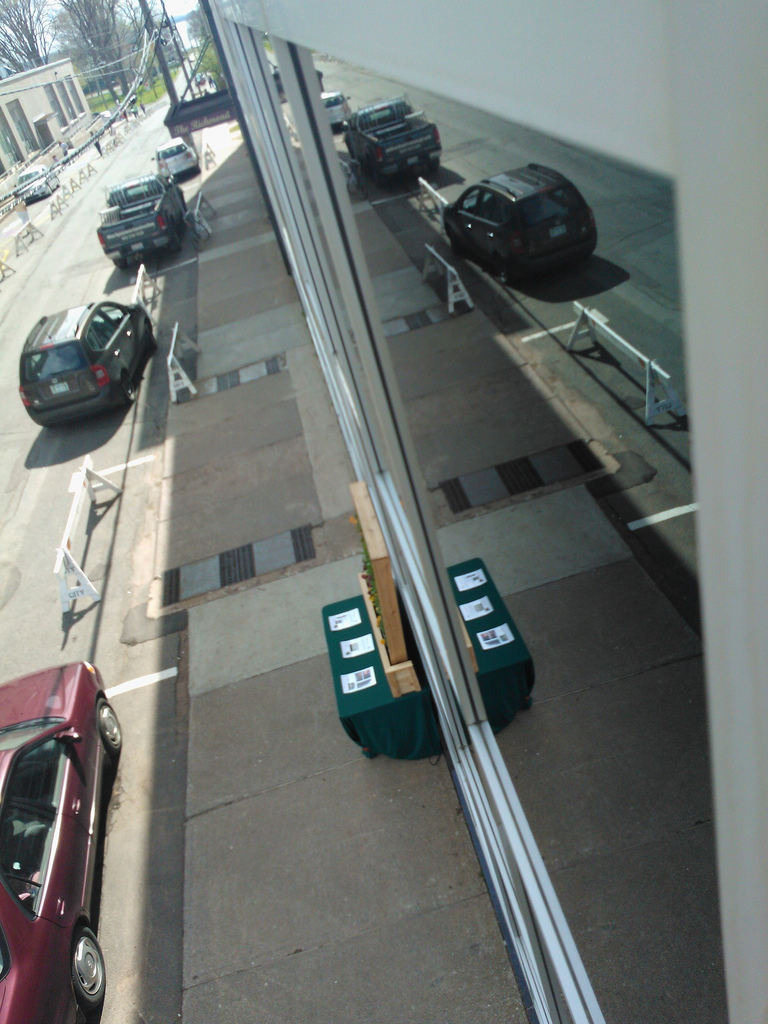
 I am
I am